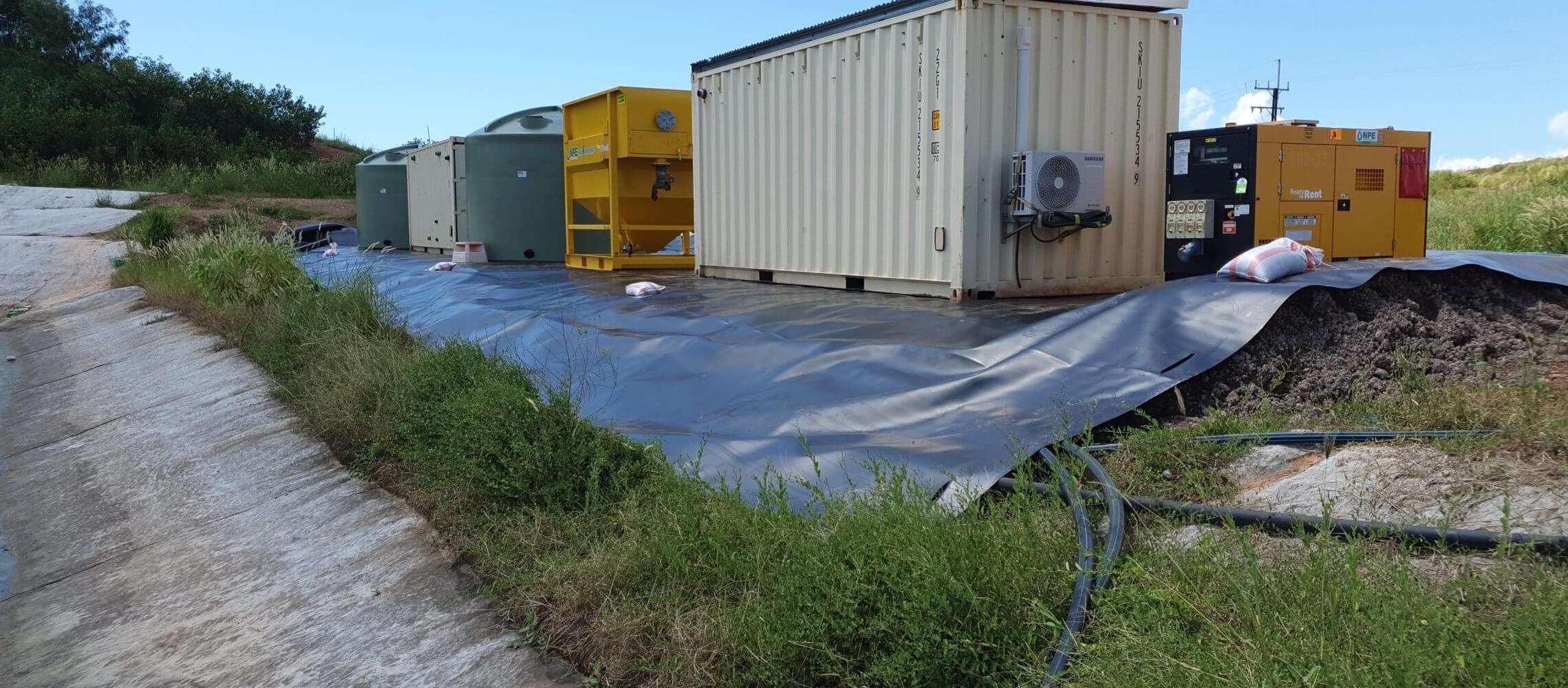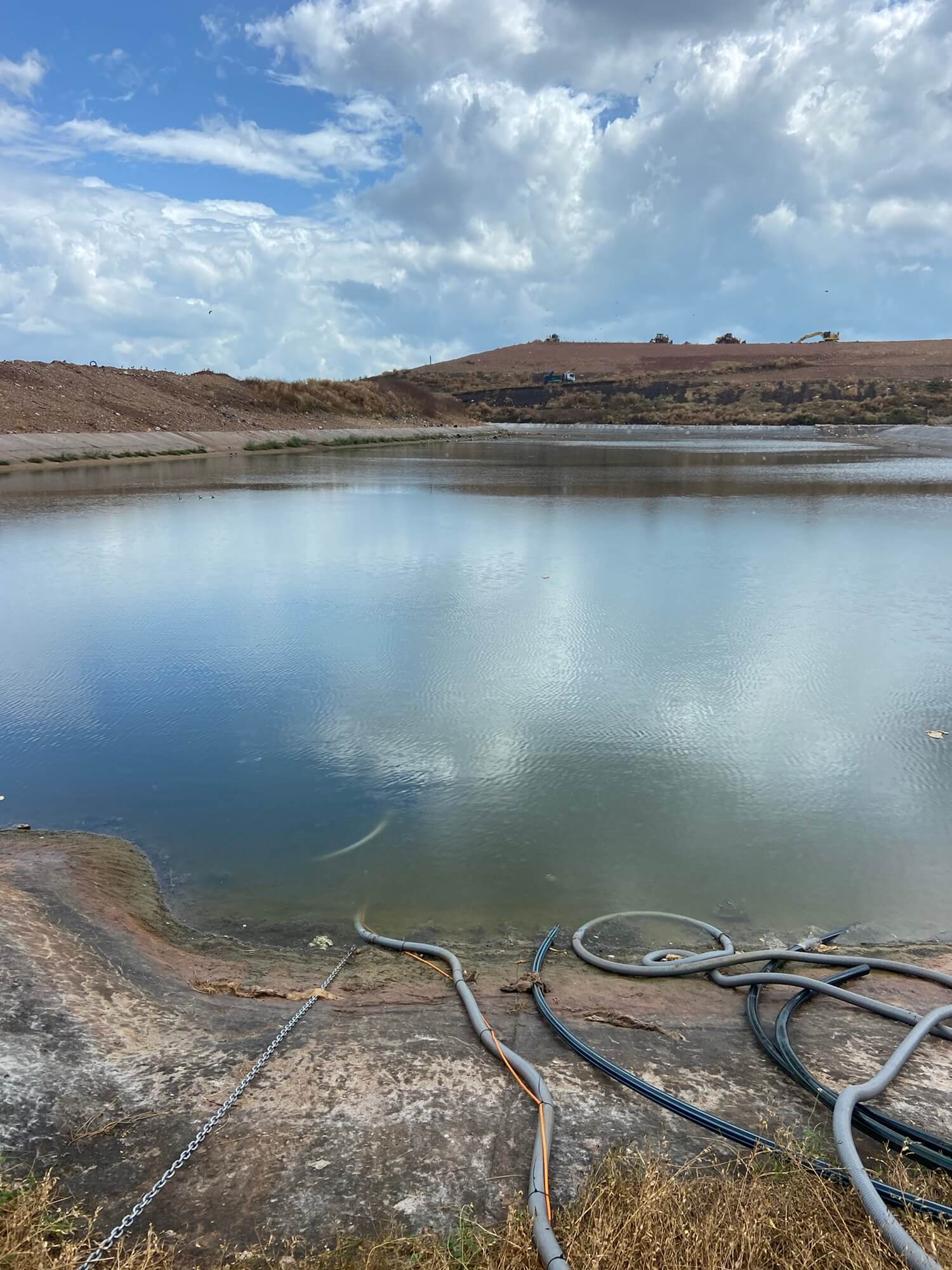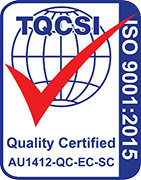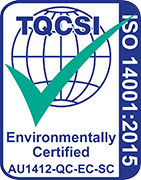PFAS Contaminated stormwater treatment
In this case study we present the challenges and solutions encountered during the commissioning of a newly constructed landfill cell at the Shoal Bay Waste Management Facility in Darwin, Northern Territory, Australia.
Project Summary
In this case study we present the challenges and solutions encountered during the commissioning of a newly constructed landfill cell at the Shoal Bay Waste Management Facility in Darwin, Northern Territory, Australia.
Prior to commissioning, the recently constructed landfill cell became inundated with stormwater during the wet season. This stormwater became contaminated from site runoff, with elevated levels of nutrients, metals and PFAS exceeding permissible discharge limits for stormwater from the site. We demonstrated an agile solution which enabled dewatering and subsequent commissioning of the landfill cell, with 14 megalitres (ML) of contaminated stormwater treated on-site in a containerised treatment plant
This was a significant project challenge: treating a substantial volume of water to very low levels of total nitrogen (0.3 milligrams/litre), ammonia (20 micrograms/litre), heavy metals, and PFAS, before being able to discharge the water offsite. We implemented a specialised treatment processes which could be mobilised and demobilised from site quickly.
14
$800000
project
Project Summary
Prior to commissioning, the recently constructed landfill cell became inundated with stormwater during the wet season. This stormwater became contaminated from site runoff, with elevated levels of nutrients, metals and PFAS exceeding permissible discharge limits for stormwater from the site. We demonstrated an agile solution which enabled dewatering and subsequent commissioning of the landfill cell, with 14 megalitres (ML) of contaminated stormwater treated on-site in a containerised treatment plant
This was a significant project challenge: treating a substantial volume of water to very low levels of total nitrogen (0.3 milligrams/litre), ammonia (20 micrograms/litre), heavy metals, and PFAS, before being able to discharge the water offsite. We implemented a specialised treatment processes which could be mobilised and demobilised from site quickly.
Solution
Our engineers deployed a containerised water treatment plant involving a multi-step approach to tackle the diverse contaminants in the water effectively. This approach included:
- Coagulation and Flocculation: The initial step involved the addition of coagulants to remove particulate and organic matter through flocculation and sedimentation, leading to their removal as sludge.
- Breakpoint chlorination: The water underwent breakpoint chlorination for ammonia removal to achieve the strict limits required.
- Ion exchange: An advanced ion exchange process was employed to selectively adsorb PFAS compounds from the water, reducing their concentration to non- detect levels.
- pH correction: After ion exchange, pH correction ensured the treated water met all required limits for discharge.
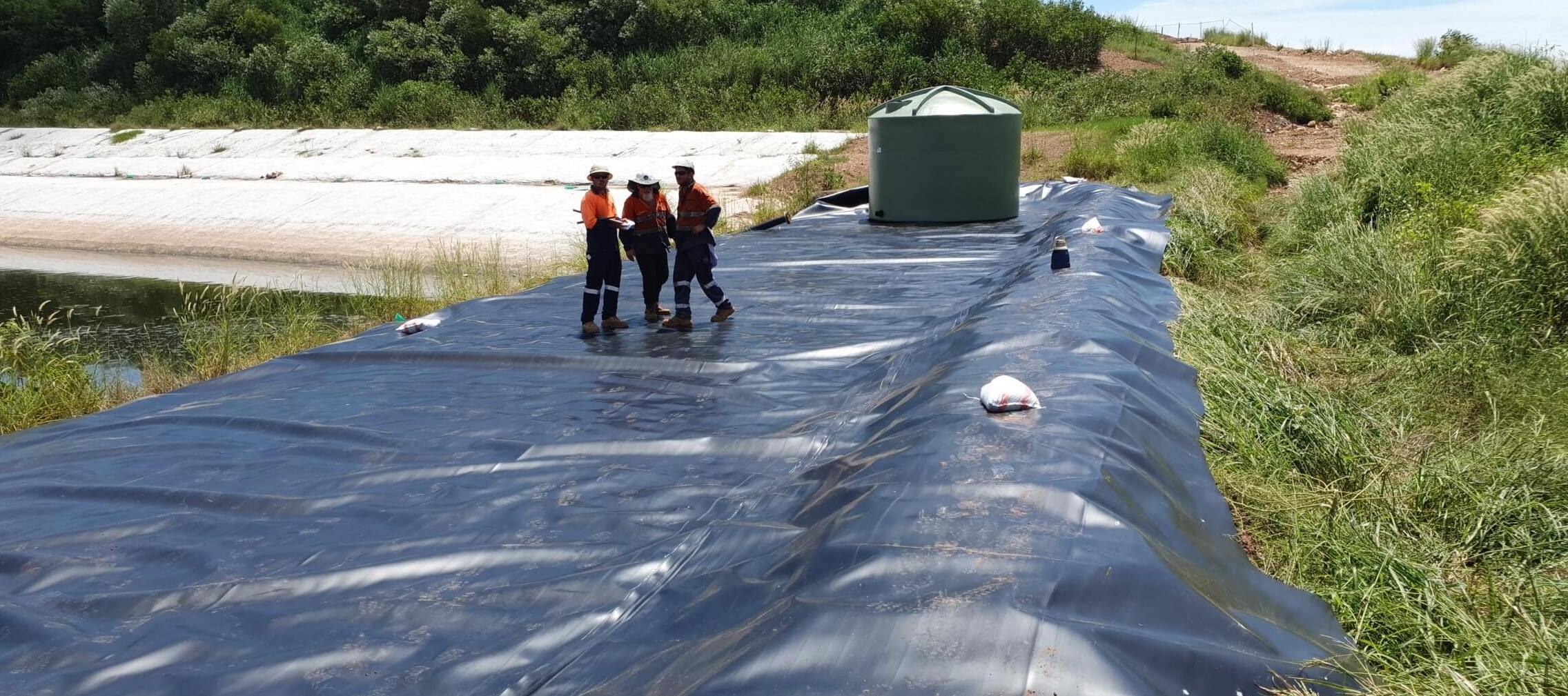
Outcomes
The implementation of the water treatment project yielded the following key outcomes:
- Ultra-low trace levels of contaminants: The treated water met and surpassed the desired ultra-low trace levels of contaminants, including nutrients, heavy metals and PFAS, ensuring compliance with stringent stormwater discharge regulations.
- Environmental protection: The project safeguarded the receiving environment from potential contamination, aligning with the City of Darwin’s commitment to environmental protection.
- Increased landfill capacity: By removing accumulated stormwater, the landfill cell could be commissioned, thereby opening up substantial capacity at the Shoal Bay Waste Management Facility, ensuring uninterrupted waste management operations.
In conclusion, our water treatment project for the City of Darwin exemplifies a comprehensive approach to address diverse contaminants and achieve ultra-low trace levels of contaminants in treated water. By successfully implementing coagulation/flocculation, breakpoint chlorination, PFAS removal via ion exchange, and pH correction, the City of Darwin ensured protection of the environment and compliance with strict Environmental Protection Authority discharge requirements for stormwater.
The comprehensive approach from the Water & Carbon Group team shows how our engineering knowledge and commitment to delivering efficient and sustainable solutions can be applied to the most complex of water treatment challenges.
For more information about our services, visit our Wastewater and PFAS pages. Contact us to talk about your project today.
14
ML of stormwater treated
$800000
project
